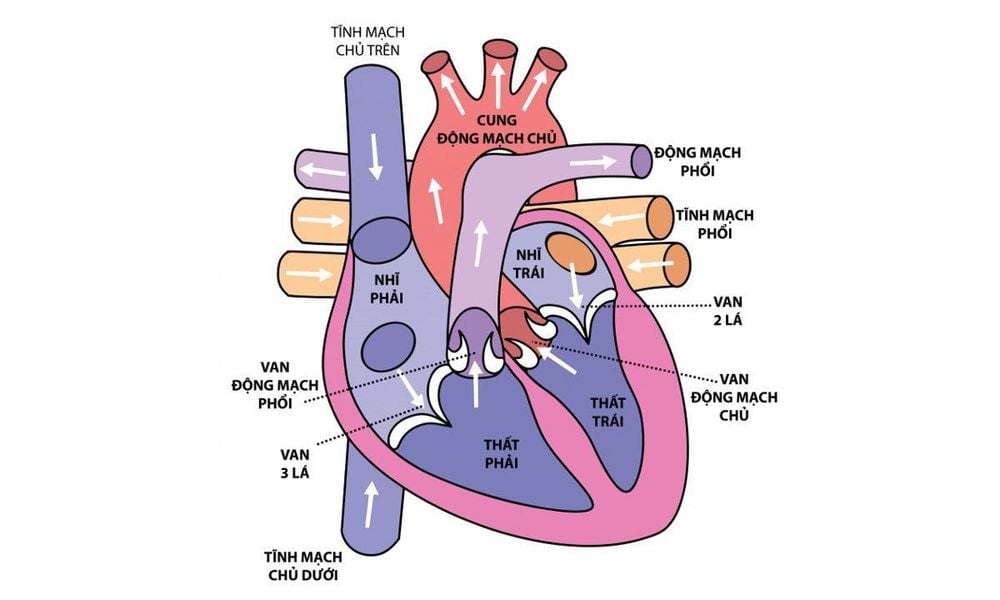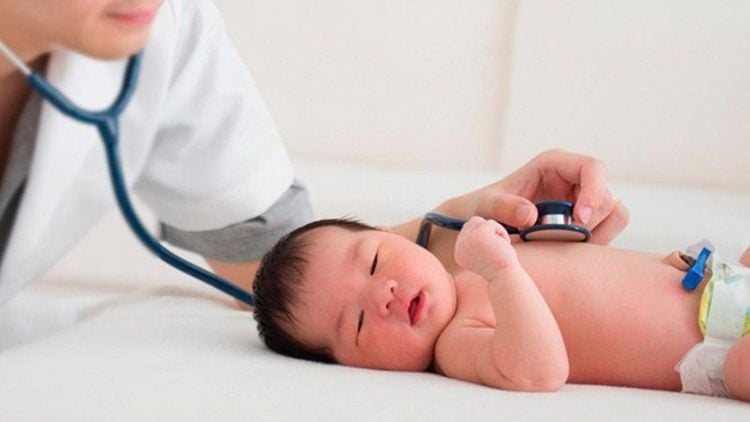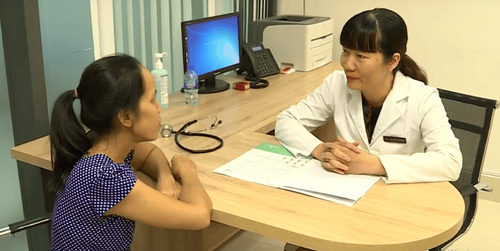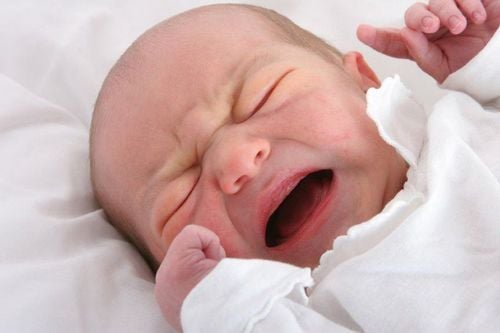This is an automatically translated article.
Congenital heart defect in children is a structural abnormality of the heart, present from birth with unknown causes. Congenital heart defects are very diverse, in which pulmonary artery stenosis in children is a dangerous malformation that causes symptoms such as cyanosis, pale skin, shortness of breath, poor feeding, and needs to be treated right away. at birth to avoid complications that lead to death.
1. What is pulmonary stenosis?
Pulmonary stenosis is a congenital heart defect that causes the pulmonary valve to have an abnormal structure. The pulmonary valve is one of the four heart valves responsible for opening and closing when blood flows in and out of the heart. The normal structure of a pulmonary valve consists of two thin leaflets, at each heartbeat the valve opens to allow blood to be pushed through the heart to the lungs to exchange gases with the pulmonary artery. In the terminal phase, the valve closes to prevent blood from flowing back to the heart.
However, when pulmonary stenosis occurs, one or both valves are too thick or open improperly, deformity will cause insufficient blood flow to go to the lungs in this way, but instead by another natural route. in the heart and the arteries in the heart. The reason the fetus is still developing in the womb is because at this time the fetal lungs are not yet functioning with the function of supplying oxygen to the blood, the placenta will continue to carry oxygen until the baby is born and the umbilical cord is cut. At this time, the child's lungs need to work to supply oxygen to the blood, causing the condition of the child to narrow the pulmonary artery, causing serious effects, even death.

Hẹp động mạch phổi
2. Causes and risk factors for pulmonary stenosis in children
The cause of pulmonary stenosis as well as other congenital heart diseases is still not clear, but is often associated with a number of defects such as:
ductus arteriosus Pulmonary stenosis primary ventricular septum Some risk factors can cause pulmonary stenosis in young children include:
Mother got Rubella during pregnancy Mother drank alcohol, smoked during pregnancy Mother with uncontrolled gestational diabetes Mother with autoimmune diseases such as lupus erythematosus during pregnancy Child with Down syndrome (an extrachromosomal 21)
3. Symptoms of pulmonary stenosis in children
Symptoms of pulmonary artery stenosis in babies can be noticed as soon as a few hours after birth, common include:
Cyanosis: blue or gray skin Cold, pale, wet skin Difficulty breathing, rapid breathing Feeding Poor breathing, difficulty breathing during feeding Symptoms of moderate or severe valve stenosis exertion include:
Fatigue, syncope Very slow weight gain Difficulty breathing, evident on exertion Abdominal distension Hear heart murmur with high intensity The size varies depending on the condition of the disease

Khó thở là một trong các triệu chứng của hẹp động mạch phổi ở trẻ ngay sau sinh
4. Methods of treating pulmonary stenosis in young children
Most babies with pulmonary stenosis need to be kept open after birth, this will keep blood flowing until the pulmonary valve is repaired. In addition, the methods to treat pulmonary artery stenosis will include both medical and surgical:
For medical treatment: drugs to keep the ductus open (drugs to increase blood flow through the heart, drugs to increase contractility). cardiomyopathy, anticoagulants, diuretics, antiarrhythmic drugs). Cardiac catheterization: A method of improving blood flow by using a thin tube inserted into the heart, the doctor can simultaneously widen the valve by placing a balloon or stent to keep the ductus arteriosus open. Surgery: In most cases, children with pulmonary stenosis need surgery immediately after birth to widen or replace the pulmonary valve. If your child has a ventricular septal defect, the doctor will place a patch in the hole to close the hole between the two ventricles of the heart, improving blood flow to the lungs and the rest of the body. Surgery in children with pulmonary stenosis with underdeveloped right ventricle requires multi-stage surgery under the guidance of a pediatric cardiologist. For detailed advice, please come directly to Vinmec health system or register online HERE.
MORE:
Be careful with pulmonary valve stenosis Common types of congenital heart defects Early recognition of congenital heart disease in children













